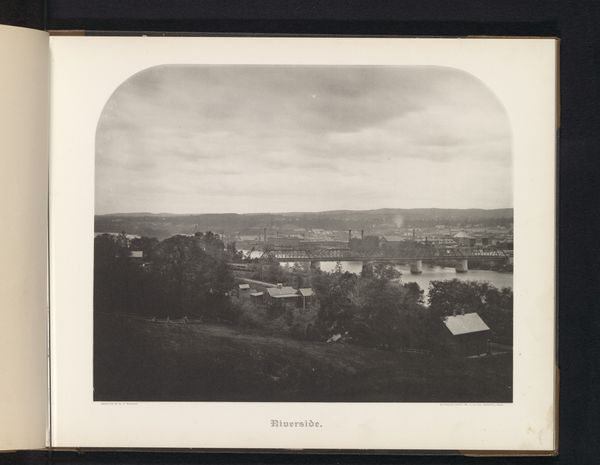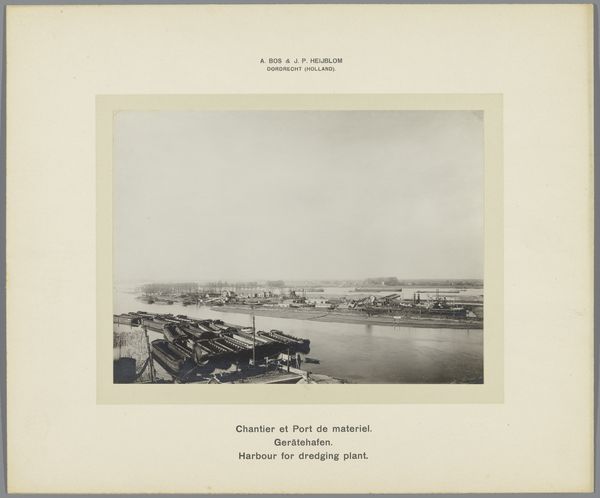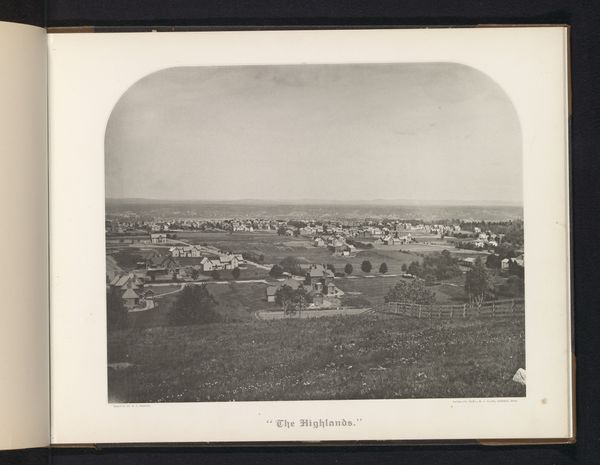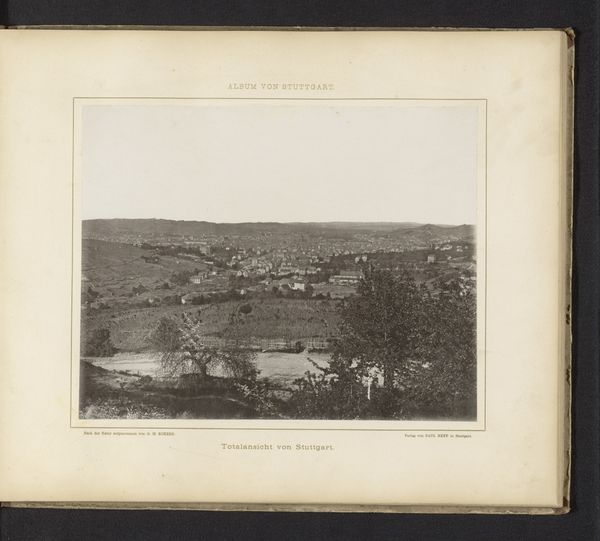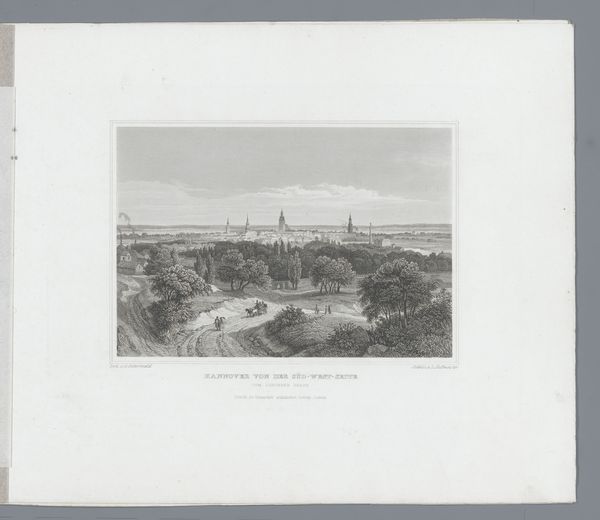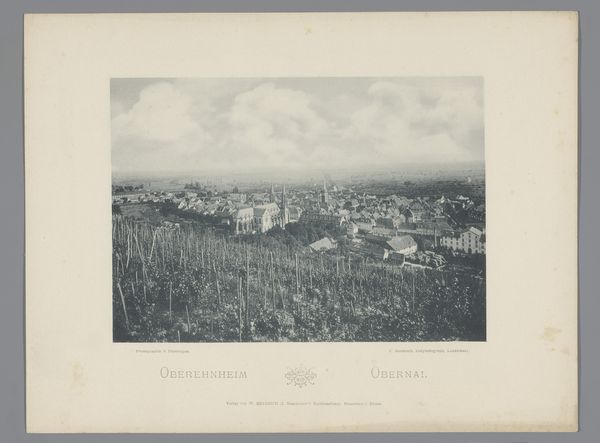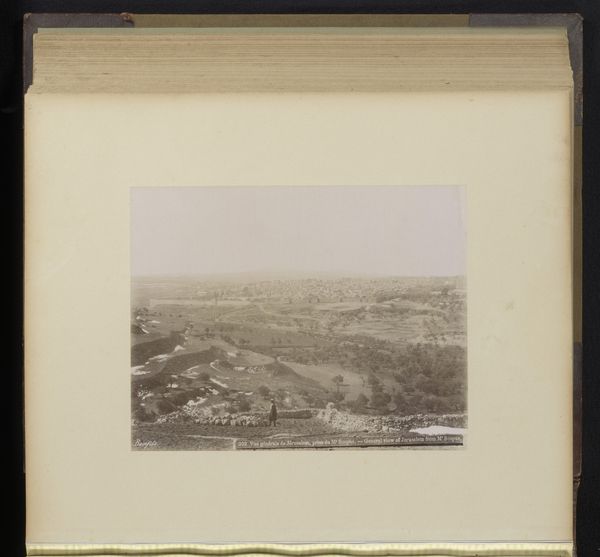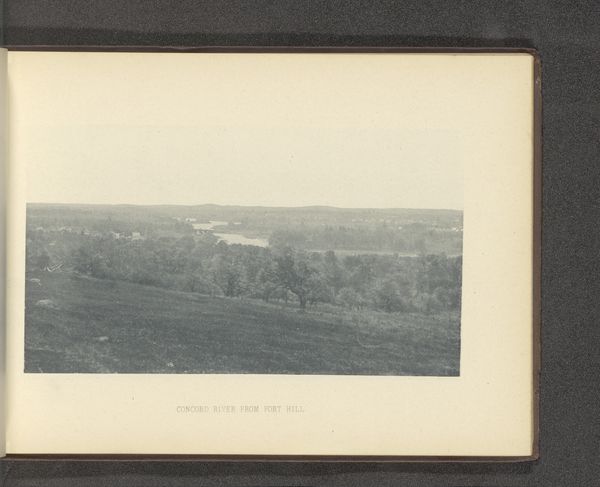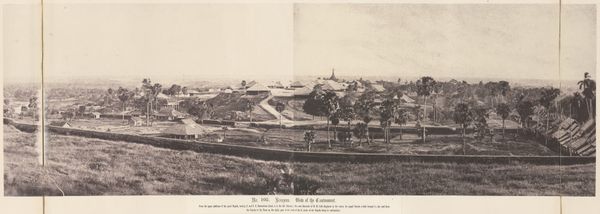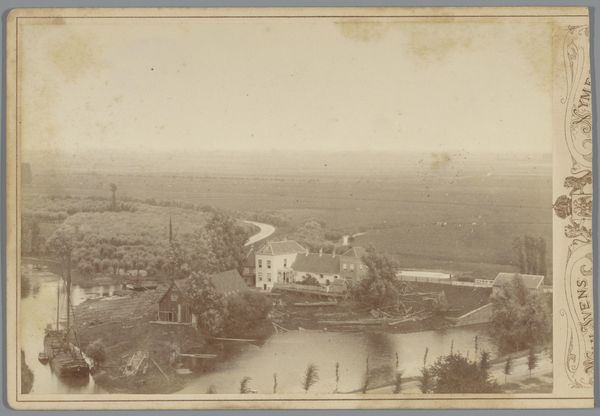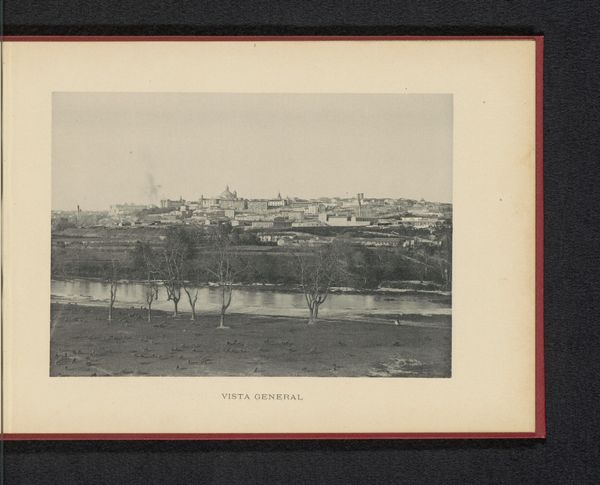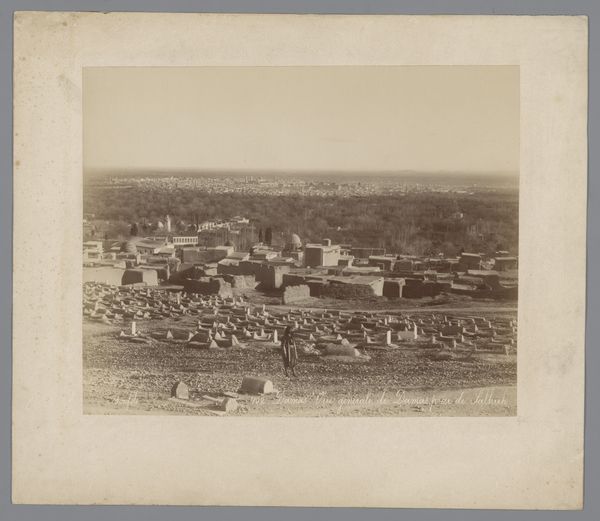
photography, albumen-print
#
pictorialism
#
landscape
#
photography
#
cityscape
#
albumen-print
Dimensions: height 153 mm, width 216 mm
Copyright: Rijks Museum: Open Domain
Curator: Charles Bernhoeft’s photograph, "Gezicht op Metz," created before 1894 using the albumen print process, offers a distant perspective of the city within a pictorialist landscape. Its soft focus and tonal range create an almost dreamlike quality. Editor: It does indeed. The tonal gradation here is remarkable. The soft focus and restrained palette definitely evoke a feeling of quiet observation and detached stillness, though slightly melancholic. Curator: Viewing Metz through this lens requires considering the Alsace-Lorraine context. The shifting allegiances of the region significantly shaped civic identity; Metz, positioned as a symbol of Franco-German tension, embodies cultural and political power struggles. How does this history influence your interpretation? Editor: The subdued contrast, and careful compositional arrangement—the snaking river drawing the eye towards the receding cityscape— speaks more of a formal exercise of rendering three-dimensional space. Though you are correct that landscape photography cannot avoid the geopolitics of the time. Curator: Pictorialism as a movement consciously embraced subjective vision. So the aesthetic choices cannot be viewed as objective. It positioned photography alongside painting and etching and as a valid art form with unique cultural value. The way the city is presented could be read in relationship to the idea of what Metz meant to the Germans who occupied the land at that point in history. Editor: Possibly. It may instead emphasize formal balance and compositional harmony, and in so doing neutralize politics and history in favour of aesthetic self-sufficiency. It is interesting, isn't it, how differing theoretical frameworks may pull the analysis in almost opposite directions? Curator: Absolutely. Considering Bernhoeft's place in that narrative helps decode these decisions. For instance, this view's strategic viewpoint and the careful staging invites questioning its intent. It's more than scenery; it is a statement. Editor: The statement here could indeed be multilayered. It may signify the end of the domination of representational values or signal how it may be used in photography for further development and to explore a sense of beauty in landscapes by looking at contrasts and composition. The tonal contrast gives such depth and dimension to this work. Curator: Ultimately, “Gezicht op Metz" presents not just a landscape, but the complicated layering of political will and historical record inscribed in time. Editor: And the work, in turn, through light and structure, suggests that it should.
Comments
No comments
Be the first to comment and join the conversation on the ultimate creative platform.
